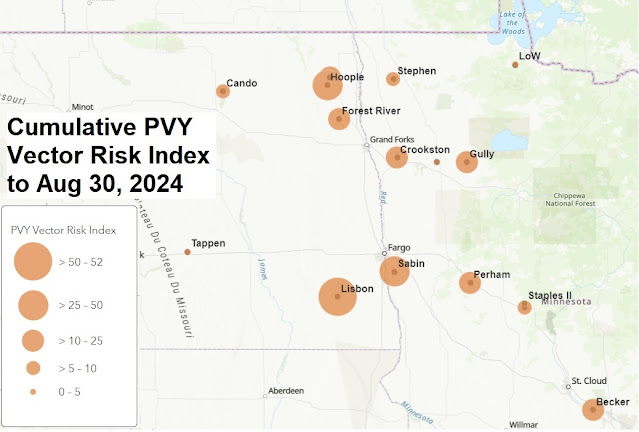Trap Catches Aug 23 - Aug 30, 2024.
With 6 trap locations reporting this week, the average number of vector aphid species recovered per location has significantly declined this week, as has the average PVY Vector Risk Index values at each location. Our trap captures this week are about a week earlier than the 2012-2023 average (see the chart below (see chart). This has probably been the result of lower temperatures and increased rainfall.
Soybean aphid captures, while still occurring at most reporting locations, are lower than the previous 2 weeks. Likewise, small grain aphid numbers have dropped off as well. Even non-vector species were less numerous.
There have been reports, however, of heavy aphid infestations in central MN commercial fields. These populations are experiencing high reproduction rates and attempts to manage their growth with synthetic pyrethroids have not been as successful as anticipated. If synthetic pyrethroids are failing to control populations, it may be advisable to try aphid-targeted insecticides such as Transform (Cortev; sulfoxaflor), Sivanto Prime (Bayer Cropscience; flupyradifurone), or Sefina (BASF; afidopyropen). All three are effective aphicides and have performed well in field trials.
Some locations have already vine killed, but for those that have not, as long as plant material is green and circulating, the plant is still susceptible to feeding by aphids and potential virus transmission.
Bottom line - aphid populations and PVY Vector Risk significantly decreased over the last week. Any field that is not yet vine killed remains susceptible to potential virus transmission...





No comments:
Post a Comment